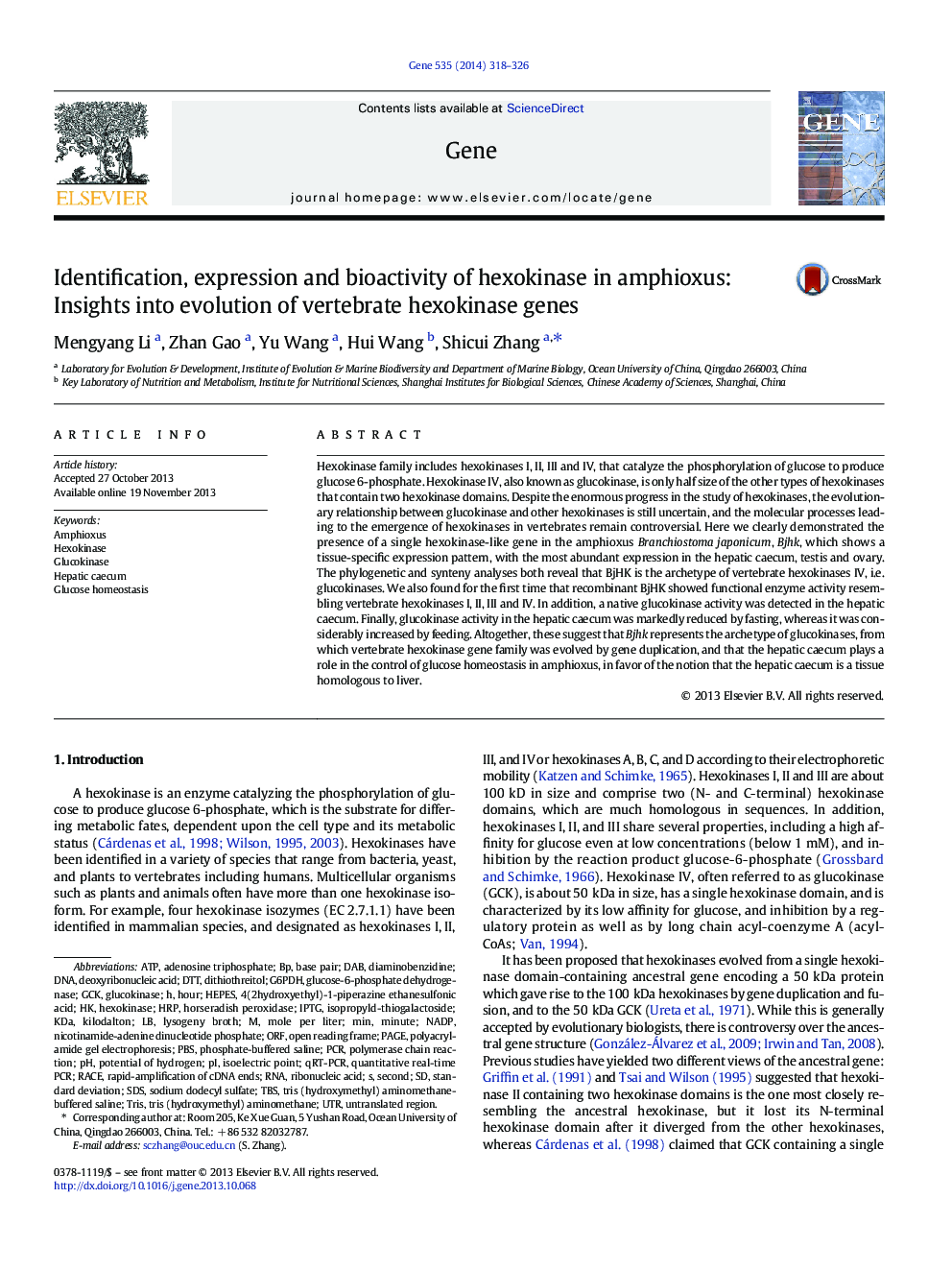| کد مقاله | کد نشریه | سال انتشار | مقاله انگلیسی | نسخه تمام متن |
|---|---|---|---|---|
| 5905963 | 1159943 | 2014 | 9 صفحه PDF | دانلود رایگان |
عنوان انگلیسی مقاله ISI
Identification, expression and bioactivity of hexokinase in amphioxus: Insights into evolution of vertebrate hexokinase genes
دانلود مقاله + سفارش ترجمه
دانلود مقاله ISI انگلیسی
رایگان برای ایرانیان
کلمات کلیدی
NADPkDaHRPTBSkiloDaltonqRT-PCRPAGETRISDTTIPTGORFGCKHEPESSDSG6PDHPBSDABDNA - DNA یا اسید دزوکسی ریبونوکلئیکAdenosine Triphosphate - آدنوزین تری فسفاتATP - آدنوزین تری فسفات یا ATPAmphioxus - آمفویکسdeoxyribonucleic acid - اسید deoxyribonucleicribonucleic acid - اسید ریبونوکلئیکRNA - اسید ریبونوکلئیکpolyacrylamide gel electrophoresis - الکتروفورز ژل پلی آکریل آمیدstandard deviation - انحراف معیارtris (hydroxymethyl) aminomethane - تریس (هیدروکسی متیل) آمینومتانrapid-amplification of cDNA ends - تکثیر سریع cDNA به پایان می رسدbase pair - جفت پایهMin - حداقلminute - دقیقهSecond - دومینdiaminobenzidine - دیامینو بنزیدینdithiothreitol - دیتیوتریتولHour - ساعتsodium dodecyl sulfate - سدیم دودسیل سولفاتopen reading frame - قاب خواندن بازlysogeny broth - لیزوزومی گوگردPhosphate-buffered saline - محلول نمک فسفات با خاصیت بافریRace - مسابقهUTR یا untranslated regions - منطقه ترجمه نشدهuntranslated region - منطقه غیر ترجمهIsoelectric point - نقطه ایزوالکتریکnicotinamide-adenine dinucleotide phosphate - نیکوتین آمید آدنین دیونوکلئوتید فسفاتGlucose homeostasis - هوموستاز گلوکزhexokinase - هگزوکینازpolymerase chain reaction - واکنش زنجیره ای پلیمرازquantitative real-time PCR - واکنش زنجیره ای پلیمراز واقعی در زمان واقعیPCR - واکنش زنجیرهٔ پلیمرازpotential of hydrogen - پتانسیل هیدروژنHorseradish peroxidase - پراکسیداز هوررادیشglucose-6-phosphate dehydrogenase - گلوکز 6-فسفات دهیدروژنازGlucokinase - گلوکوکیناز
موضوعات مرتبط
علوم زیستی و بیوفناوری
بیوشیمی، ژنتیک و زیست شناسی مولکولی
ژنتیک
پیش نمایش صفحه اول مقاله

چکیده انگلیسی
Hexokinase family includes hexokinases I, II, III and IV, that catalyze the phosphorylation of glucose to produce glucose 6-phosphate. Hexokinase IV, also known as glucokinase, is only half size of the other types of hexokinases that contain two hexokinase domains. Despite the enormous progress in the study of hexokinases, the evolutionary relationship between glucokinase and other hexokinases is still uncertain, and the molecular processes leading to the emergence of hexokinases in vertebrates remain controversial. Here we clearly demonstrated the presence of a single hexokinase-like gene in the amphioxus Branchiostoma japonicum, Bjhk, which shows a tissue-specific expression pattern, with the most abundant expression in the hepatic caecum, testis and ovary. The phylogenetic and synteny analyses both reveal that BjHK is the archetype of vertebrate hexokinases IV, i.e. glucokinases. We also found for the first time that recombinant BjHK showed functional enzyme activity resembling vertebrate hexokinases I, II, III and IV. In addition, a native glucokinase activity was detected in the hepatic caecum. Finally, glucokinase activity in the hepatic caecum was markedly reduced by fasting, whereas it was considerably increased by feeding. Altogether, these suggest that Bjhk represents the archetype of glucokinases, from which vertebrate hexokinase gene family was evolved by gene duplication, and that the hepatic caecum plays a role in the control of glucose homeostasis in amphioxus, in favor of the notion that the hepatic caecum is a tissue homologous to liver.
ناشر
Database: Elsevier - ScienceDirect (ساینس دایرکت)
Journal: Gene - Volume 535, Issue 2, 10 February 2014, Pages 318-326
Journal: Gene - Volume 535, Issue 2, 10 February 2014, Pages 318-326
نویسندگان
Mengyang Li, Zhan Gao, Yu Wang, Hui Wang, Shicui Zhang,